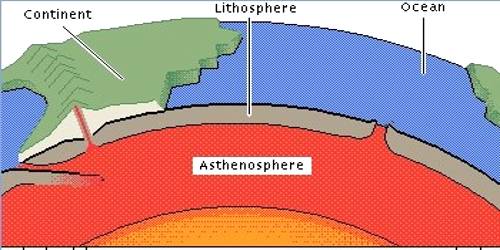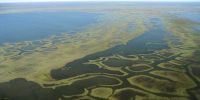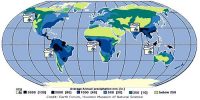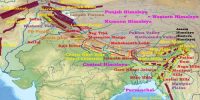Asthenosphere
Zone in the Earth’s mantle that exhibits plastic properties. It is the upper layer of the earth’s mantle, below the lithosphere, in which there is relatively low resistance to plastic flow and convection is thought to occur. It is located below the lithosphere at between 100 and 200 km. It was named after a British geologist named J. Barrel. His theory divided the Earth’s interior into three parts including the lithosphere, asthenosphere, and the centrosphere.
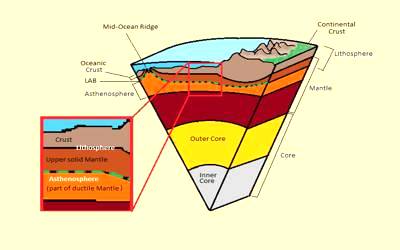
It is almost solid, although some of its regions could be molten (e.g., below mid-ocean ridges). The lower border of the asthenosphere is not well defined. The depth of the asthenosphere depends mostly on the temperature. The temperature is supposed to be between 300 and 500 degrees Celsius. By contrast, the inner core of the earth reaches 7000 degrees Celsius and is in fact solid.
It is the layer of the Earth that lies below the lithosphere. It is a layer of solid rock that has so much pressure and heat the rocks can flow like a liquid. The rocks are less thick than the rocks in the lithosphere. This allows the tectonic plates in the lithosphere to move around on the Earth’s surface by “floating” on the rocks that are gradually flowing like a liquid.
